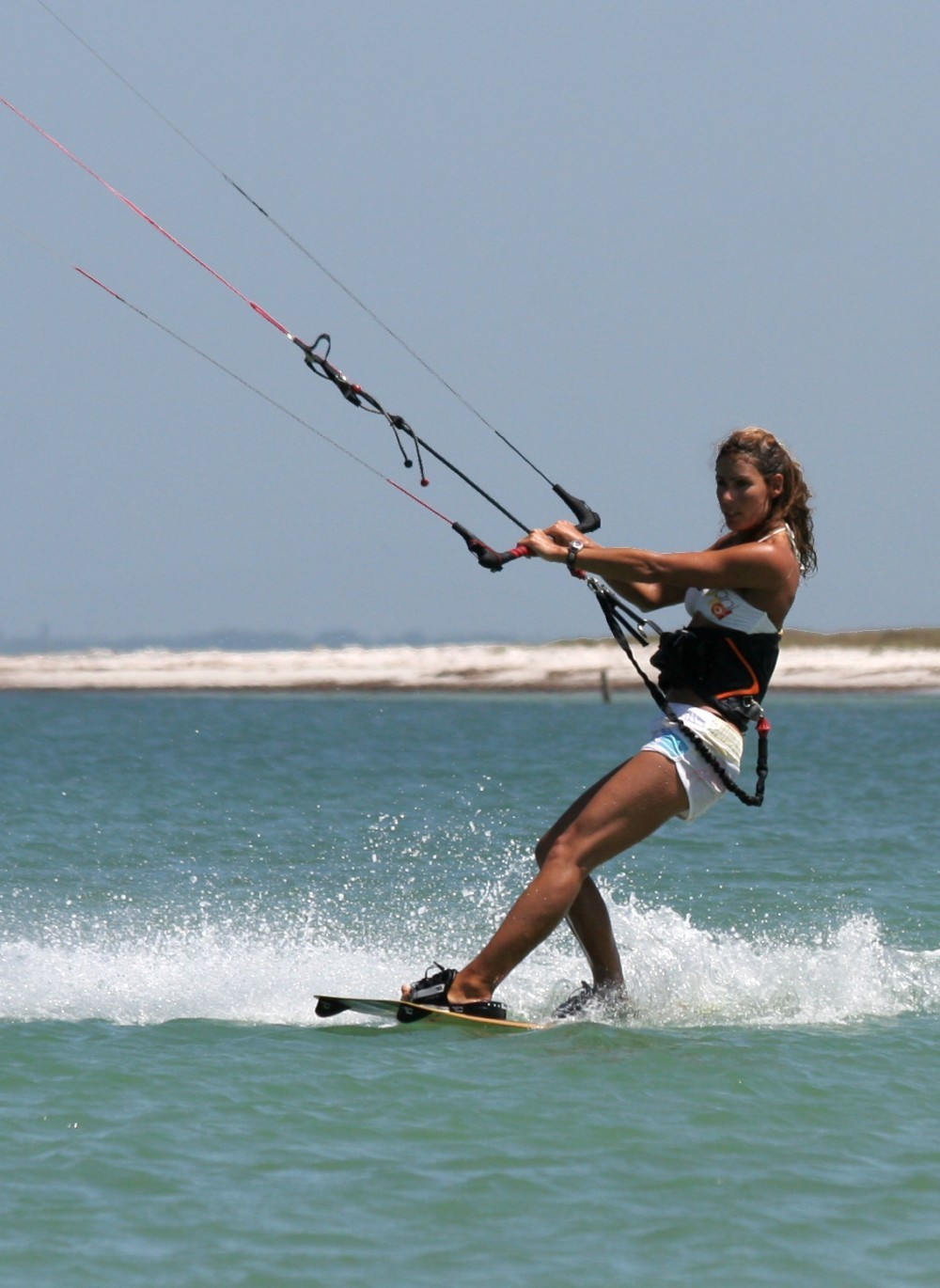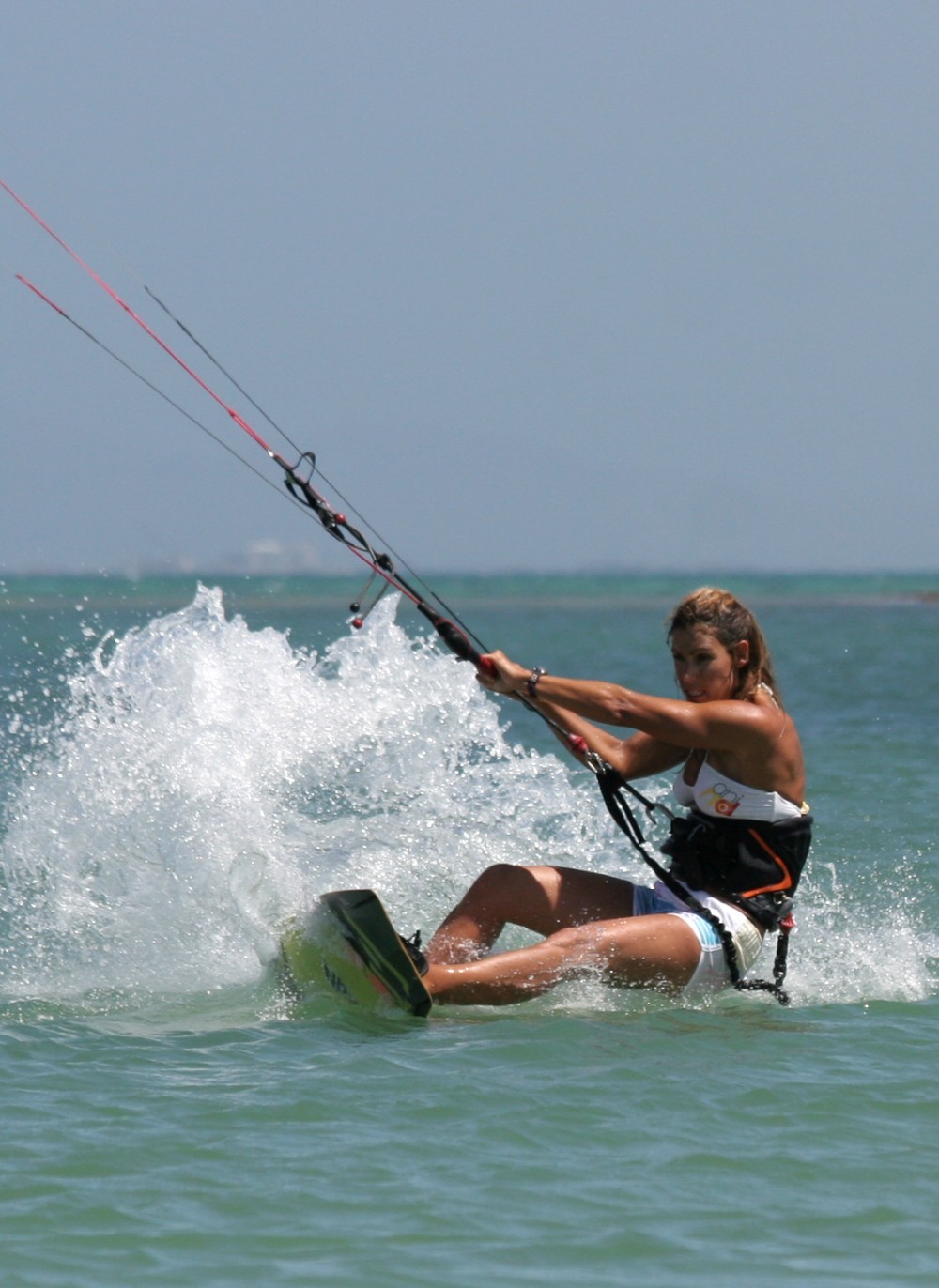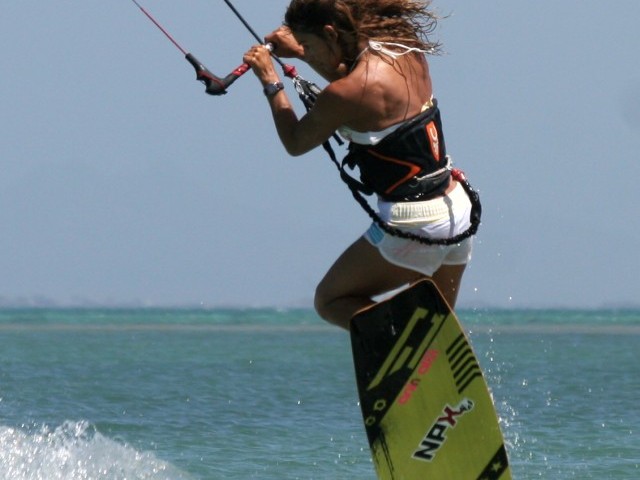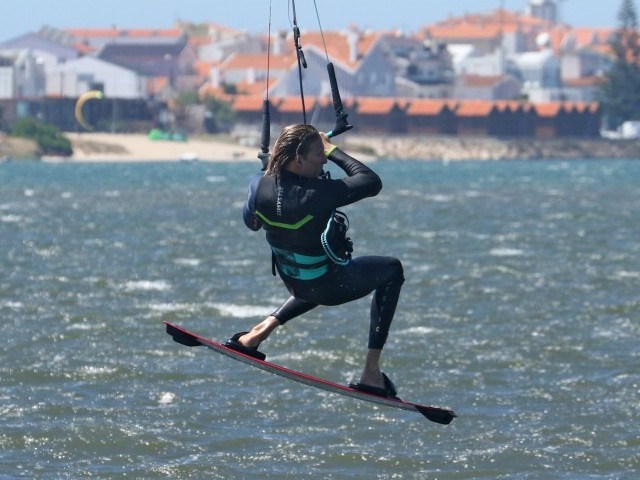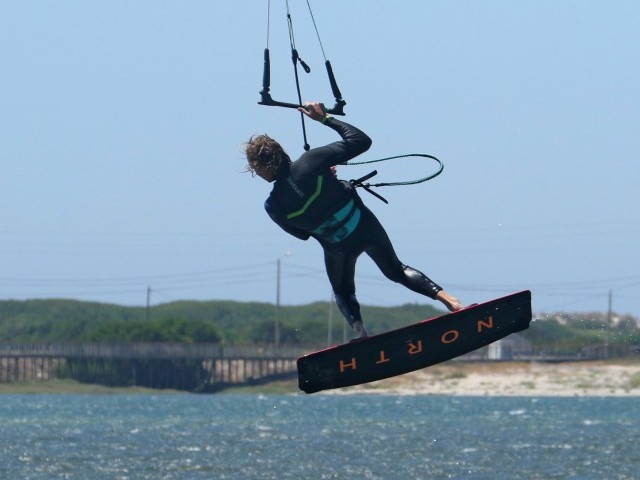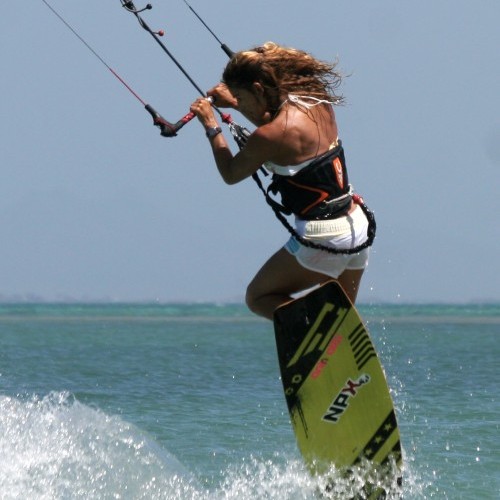
Popped Front Loop
Technique / Intermediate
Introduction
Its always good when you have the opportunity to learn something that looks lovely, which progresses nicely into more advanced moves and which you can throw down regardless of the conditions. The hooked in pooped front loop is such a cherub. Even when it’s too windy to show off all the technical tricks in your armoury, this added with a cheeky Indy grab will keep most pop aficionados happy. It’s a great way to get your head around an unhooked popped front and is a welcome alternative to a sent jump front. It’ll work on the flat, off a wave and because you can control the power in the kite even chop won’t stop you.
Hopefully you’re sold on the idea now? However this should not be your first attempt at a front loop, the sent variety is the one to learn first. It would also be prudent to have a good pop as learning your first pop whilst throwing yourself into a front roll is potentially over complicating things.
The essence of any pop trick is that all your upward propulsion comes from you alone, with no help from the kite. In principal this is fine and it stands true that you don’t want to be moving your kite across the window to give you lift. However the position of your kite will affect how much height you get. The nearer it is to 12 the more float you’ll have, and if you fancy yourself as a wake style legend and park the kite at 45˚ you’ll need some mighty self induced pop to get yourself enough height and buy yourself enough time to get around. So it stands to reason that if you’re learning this move you should have the kite around 1 or 11 o’clock. This way the kite will be just low enough that you can edge against it, but it will also be high enough to give you some bonus lift and assist with getting your board back under you.
Breaking it Down
Lets have a look at a few crucial stages of this move so that you can concentrate on the matter in hand and try to visualise the most critical moment of them all, the take off.
The Approach
As you won’t be using the kite for lift, you’ll be needing some speed so that you can pop. Assuming that you can pop you will already know that to generate speed you need to head slightly off the wind with power in your kite. If you head off down wind too suddenly you’ll stand up and loose all your speed, so try and change direction smoothly by steering the board in front of you rather than standing up over it.
Pic A. shows Karine in a perfect pre pop position. She has her kite around 11 o’clock and has steered her board off the wind by extending her feet (as if she were standing on tip toes). To maintain a good stance she has pushed her front leg out and has moved her hips back behind her back foot. Her shoulders are still behind her hips and the board is still in between her and the kite. Her hands are centred on the bar to prevent any unwanted kite movement and she is looking where she is going. From here she can still work the kite to get more speed if she needs, or she can carve back onto her edge if she acquires too much speed.
The Carve
This is not the moment to ponder on as in reality it only lasts a split second. However your body position here pretty much defines the amount of pop you get so visualising it can only be of benefit.
Best place to start in Pic B. would be Karine’s kite face. To get decent pop, and enough to get around a rotation requires some effort, so a bit of aggression will go a long way. Next see how close Karine has her derriere to the sea. This is only possible because of the position she took into the pop. With her weight back and upwind it is easy enough for Karine to get back onto her edge by turning suddenly upwind, using her shoulders to twist her upper body around and her hips to turn the board. Her back leg is flexed and ready to extend, and her front leg is extended which keeps Karine’s board on an edge. As soon as she gets in this position Karine must be ready to pop up, or else she’ll loose her speed. The final thought at this moment must be, don’t pull on the back hand.
The Take Off
As you know from a front loop, the take off is everything as it initiates the rotation. Here it also needs to give you pop. So the trick is to fire yourself into the rotation without flattening the board off, which is helped enormously by the committed carving position in the previous picture.
Pic C. shows Karine as she explodes for take off. You can see how her back leg is extending against the resistance of the edge of the board, pushing her body up. However unlike a sent front loop has not thrown herself across the board towards the sea on the other side, as this would flatten the board. Instead she throws her head towards the nose of the board, allowing herself to bend sideways at the waist. This will be enough to start her rotation. Faith is key.
Pic D. clearly demonstrates the commitment to the pop. As Karine goes up she keeps the bar in. Should she let it out she will kill all the power she has generated and drop back down. With the bar in and her arms bent Karine will rotate easily around her middle lines. It’s also worth noting how she has actually pulled on her front hand to steer the kite down just to make sure it doesn’t drift up to 12 o’clock. Karine is now in the textbook position to “throw” her rotation. With her back leg extended and front leg bent, and her weight committed down and forwards all she has to do now to speed up her rotation is turn her head to look back over her trailing shoulder and bend her back leg.
One Last Thing
We highly recommend practicing kiting across the wind with speed before bearing away and then turning up again, just to concentrate on your body position. Once you’ve done this a few times add the pop off the back leg. You will find that by popping hard your front shoulder actually wants to turn downwind and is just gagging to add the rotation. If you’re loosing you balance it is likely that you are not bearing away enough before carving hard. The more downwind you start the less far you have to rotate.
Following Sequence 1
- Pic 1. Karine prepared by kiting along on a gentle edge with speed and her kite around 11 o’clock, she then drops her weight towards the back of the board and bends her back leg.
- Pic 2. She pushes the front of the board off the wind with her extended front leg and looks downwind to gather speed.
- Pics 3 & 4. Karine turns her head and shoulders to look back upwind, twists her hips to turn the board upwind and away from the kite and drops her weight down low so that she can drive against the board.
- Pic 5. As her board turns its time for her kite face. Karine drives the board hard upwind with all her strength pushing and resisting against her edge. All the time she is also concentrating on keeping the kite still.
- Pic 6. With her front leg totally straight, holding the board on its edge as it turns back up wind, Karine is ready to pop.
- Pic 7. Karine stamps down hard with her back foot, extending her back leg and exploding up against the board. At the same time she throws her head towards the nose of the board.
- Pic 8. As she goes up Karine keeps the bar in and steers the kite forward to stop it rising. With her arms bent and the bar in close it will be easier to rotate
- Pic 9. As Karine’s head pivots down her back leg comes up off the water and it is now time for her to accelerate her rotation.
Following Sequence 2
- Pics 1 & 2. As before Karine keeps the bar in close, keeps the kite steered forward and throws her head and shoulders down towards the nose of the board. Now that the board is clearly off the water Karine needs to get rotating faster.
- Pic 3. She does this by quickly turning her head to look back over her rear shoulder.
- Pics 4 & 5. As long as Karine keeps the bar in, the kite steered forward and keeps looking over her shoulder she will keep rotating.
- Pic 6. Once Karine can see the water she can concentrate on where she will land.
- Pics 7 and 8. As her legs come around Karine extends them ready for landing. She aims to land tail first, pointing down wind on a flat board (not on an edge), as she will be carrying a fair amount of speed. As long as the tail lands first the board can pivot further around and down wind.
- Pic 9. As Karine lands she absorbs the impact and keeps her head up looking where she wants to go which keeps her balanced. She still has the bar in and the kite steered forward.
Common Problems
The usual scenario when learning this move is loosing control of the kite and finding it drifting up to 12 o’clock or worse still ending up behind you when you land.
Because you are popping with speed you will swing forward and down wind under the kite, which is why you need to keep the kite steered forward throughout the move. If the kite has a tendencies to drift up or behind make a concerted effort to actually steer the kite down hard as you pop up of the water.
If you find that you are not getting around your rotation and landing a tad early its probably because you are not getting enough pop. Remember you have to come up off an edge not a flat board so resist the power and pop up away from the board using it as a launch pad, no the water.
If you are spinning too slowly, really throw your head hard after take of. Don’t just turn it, but actually throw it around like something out of a Timotei advert!
Keystones
- Speed, off the wind
- Weight back over tail off board
- Carve hard, pop up and forward
- Steer the kite down
- Timotei flick
This technique article was in Issue 21 of IKSURFMAG.
Related
By Christian and Karine
Christian and Karine have been working together as a coaching team, running improver to advanced kitesurfing clinics since 2003.












